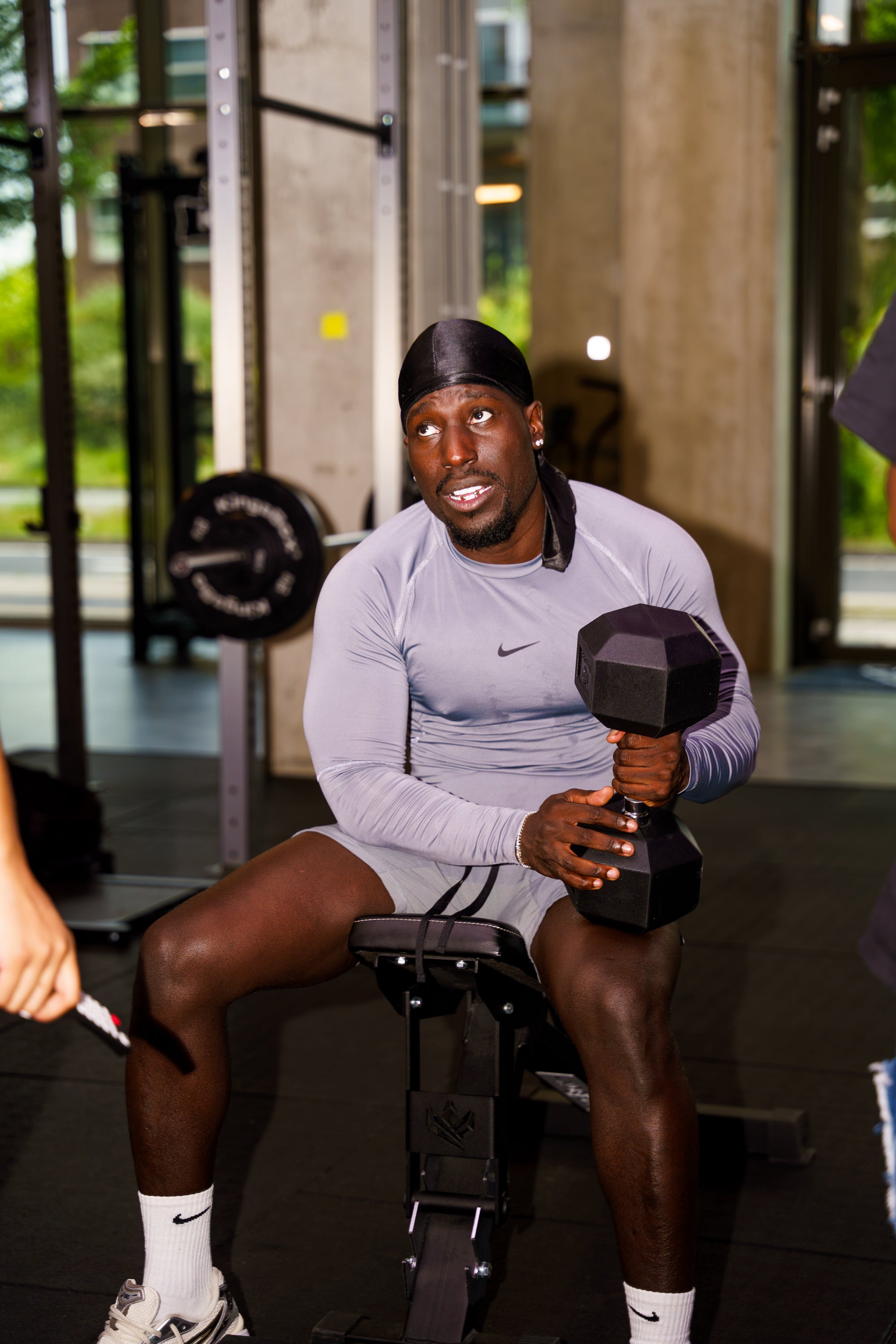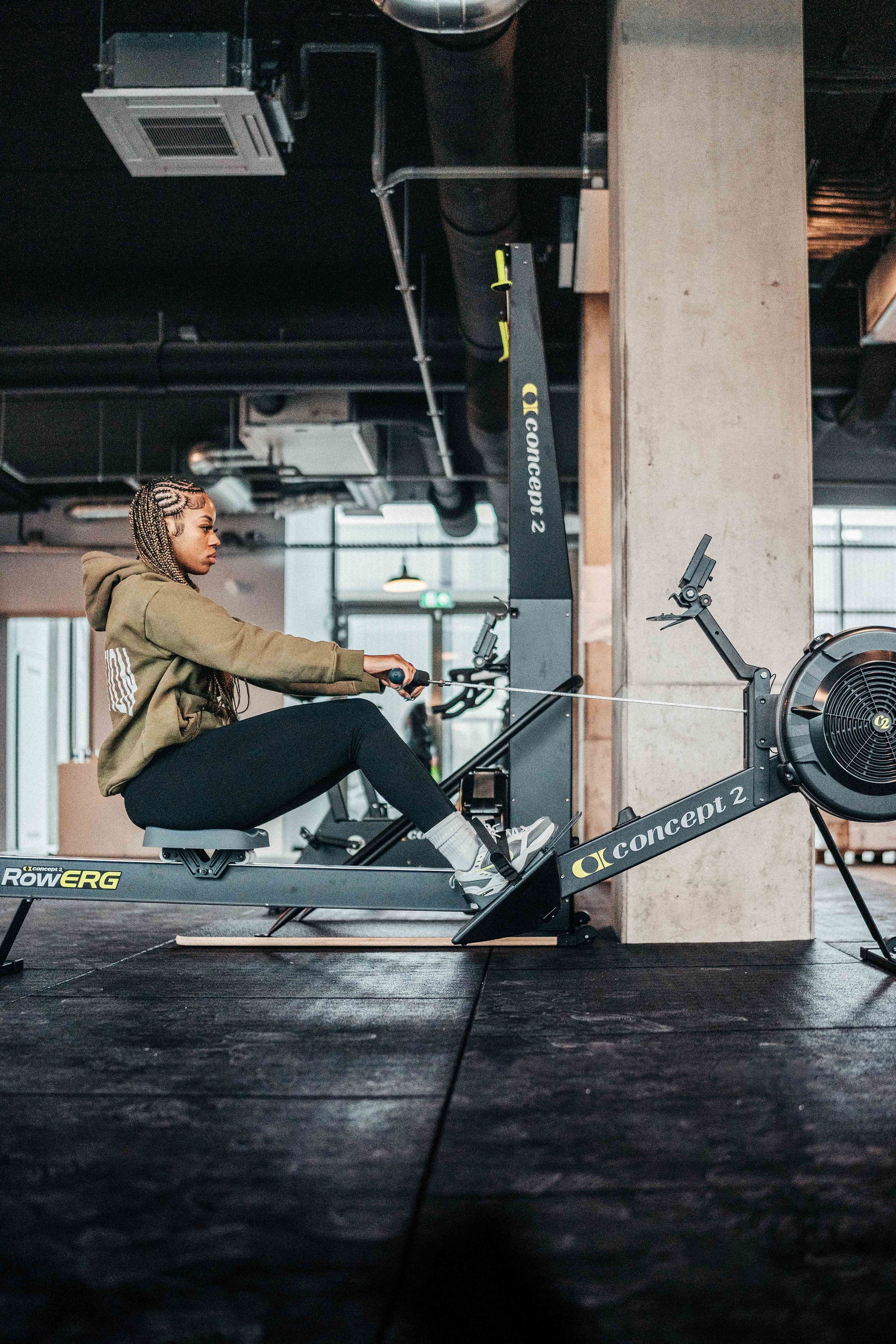Endurance Techniques for Hyrox: How to Push Through the Distance
Champion, when it comes to Hyrox, endurance isn’t just about running a long distance—it’s about pushing through each moment, maintaining a steady pace, and conquering every challenge along the way. At BallinFit, we believe that endurance is built through smart training, consistent effort, and a little insider wisdom. That’s why our Hyrox head coach, Zwayder, is here to share his top techniques to help you push through the distance and perform like a true champion.
Why Endurance Matters in Hyrox
Imagine your Hyrox race: a mix of functional movements, high-intensity sprints, and sustained efforts all wrapped into one epic challenge. Endurance is the engine that drives you through the fatigue and helps you finish strong. Whether it’s the final sprint or maintaining technique during prolonged exertion, building endurance ensures that you can withstand the cumulative demands of the race.
Key Benefits of Endurance Training:
- Sustained Energy: Improves your ability to maintain high performance over the duration of the event.
- Enhanced Recovery: Helps your body bounce back faster between high-intensity bursts.
- Mental Resilience: Strengthens your mind to keep pushing even when fatigue sets in.
- Improved Efficiency: Optimizes your body’s energy systems so you perform every movement with maximum efficiency.
Coach Zwayder’s Endurance Masterclass
Our head coach Zwayder is a living testament to the power of endurance training. With years of experience training elite Hyrox athletes, he’s refined techniques that not only build physical stamina but also fortify your mental game. Here are his top tips:
1. Break It Down: Segment Your Workouts
Coach Zwayder’s Tip:
"I always tell my athletes to break their workout into smaller, manageable segments. Don’t think of it as one endless challenge—think of it as a series of mini-goals."
How to Apply This:
- Set Micro-Goals: Divide your long-distance sessions into intervals. For example, if you plan to run 5 kilometers, focus on hitting 1-kilometer segments at a steady pace.
- Celebrate Each Segment: Mentally celebrate each completed segment. This helps keep motivation high and makes the overall distance feel less daunting.
- Interval Training: Use interval sessions where you alternate between a challenging pace and a recovery pace. For instance, run hard for 3 minutes, then jog for 1 minute. This not only builds endurance but also trains your body to recover quickly.
2. Consistent Pace Over Flashy Speed
Coach Zwayder’s Tip:
"When you're building endurance, it's about consistency. Find a sustainable pace and stick with it—you’ll outlast someone who starts too fast and burns out."
How to Apply This:
- Find Your Rhythm: During training, experiment with different paces to find one that feels challenging yet sustainable. Use a heart rate monitor to ensure you're in the optimal endurance zone.
- Steady-State Cardio: Incorporate long, steady-state cardio sessions where you maintain a constant pace for 30–45 minutes. This builds your aerobic capacity and conditions your body for the long haul.
- Mindful Running: Practice focusing on your breathing and stride. A steady, controlled pace minimizes energy waste and helps you maintain form even when fatigue sets in.
3. The Power of Recovery and Fueling
Coach Zwayder’s Tip:
"Endurance isn’t just built during the workout—it’s also built during recovery. Proper nutrition and rest are just as important as the miles you log."
How to Apply This:
- Post-Workout Nutrition: Consume a balanced meal or snack rich in protein and complex carbohydrates within 60 minutes of finishing your workout. This helps repair muscle fibers and replenish glycogen stores.
- Hydration: Keep a water bottle handy during your training sessions and drink consistently. For longer sessions, consider electrolyte beverages.
- Active Recovery: Incorporate active recovery days—light activities like yoga, stretching, or a brisk walk. These sessions enhance blood flow and help your muscles recover faster.
- Sleep: Prioritize 7–9 hours of quality sleep. Your body does its most important repair work when you sleep, so never underestimate the power of a good night’s rest.
4. Embrace the Mental Challenge
Coach Zwayder’s Tip:
"Endurance is as much mental as it is physical. Learn to push through the mental barriers, and you’ll be unstoppable."
How to Apply This:
- Visualization: Before your workouts, visualize each segment of your session. Picture yourself finishing each kilometer strong, even when it gets tough.
- Positive Self-Talk: Develop a mantra like “I am built for this” or “One step at a time.” Repeat it during moments of fatigue to keep your mindset focused and positive.
- Mindfulness Practices: Consider integrating mindfulness or meditation into your routine. Even 5 minutes of focused breathing before a workout can clear your mind and set a positive tone.
5. Mix Up Your Workouts
Coach Zwayder’s Tip:
"Variety is the spice of endurance training. Mixing different types of workouts keeps your body guessing and prevents plateauing."
How to Apply This:
- Cross-Training: Incorporate other forms of cardio like cycling, swimming, or rowing. This not only gives your primary running muscles a break but also improves overall cardiovascular fitness.
- Hill Workouts: Run on varied terrain, including hills. This challenges your muscles in different ways and builds strength along with endurance.
- Tempo Runs: Add tempo runs to your training where you run at a ‘comfortably hard’ pace for 20–30 minutes. This boosts your lactate threshold and helps you maintain speed even when fatigued.
6. Track Your Progress Religiously
Coach Zwayder’s Tip:
"You can’t improve what you don’t measure. Keep detailed records of your workouts and track every improvement, no matter how small."
How to Apply This:
- Training Journal: Write down your distances, times, and how you feel during each workout. Over time, these logs will reveal your progress and help you adjust your training.
- Use Technology: Utilize fitness apps and wearables to monitor your pace, heart rate, and recovery. Data is your best friend when it comes to pushing your limits intelligently.
- Set Benchmarks: Regularly test your endurance with benchmark workouts, like a set time trial or a Hyrox simulation. This will help you see improvements and adjust your goals accordingly.
7. The Importance of Community and Coaching
Coach Zwayder’s Tip:
"Training with others creates an environment where you can push each other to new heights. Don’t underestimate the value of a strong support system."
How to Apply This:
- Join a Training Group: Engage with fellow athletes who share your Hyrox goals. Group training sessions can provide extra motivation and accountability.
- Regular Check-Ins: Schedule regular consultations with your coach. Personalized feedback and adjustments based on your progress are crucial.
- Share Your Journey: Celebrate your milestones with your community. Whether it’s a new personal best or a breakthrough moment during a tough run, sharing your success fuels further motivation.



